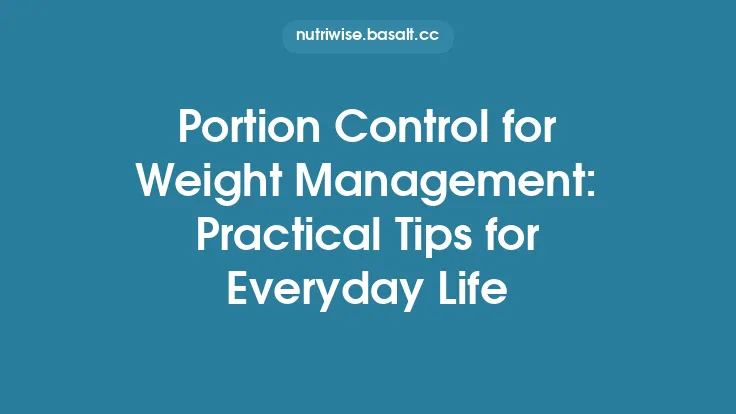When it comes to everyday nutrition, the foods you place in your cart set the stage for the health of every meal you prepare. A grocery list that is deliberately organized around micronutrient coverage can turn the routine act of shopping into a strategic step toward balanced, resilient health. Below is a step‑by‑step framework for constructing a micronutrient‑optimized list that stays relevant year after year, adapts to personal needs, and respects practical constraints such as budget, storage space, and cooking habits.
Why a Micronutrient‑Focused Grocery List Matters
Micronutrients—vitamins, minerals, and trace elements—are required in relatively small amounts, yet they orchestrate critical biochemical pathways: enzyme function, hormone synthesis, immune modulation, and cellular repair. Deficiencies often develop silently, manifesting only after months of suboptimal intake. By front‑loading your pantry and refrigerator with foods that collectively supply the full spectrum of essential micronutrients, you reduce reliance on supplementation, lower the risk of chronic disease, and support optimal performance in daily activities.
Step 1: Assess Your Baseline Micronutrient Needs
Before you can select foods, you need a clear picture of what your body requires. This assessment can be done in three layers:
- Physiological Baselines – Age, sex, and life stage (e.g., pregnancy, menopause) dictate recommended dietary allowances (RDAs) for most micronutrients. For instance, adult women need more iron (18 mg/day) than men (8 mg/day) due to menstrual losses.
- Health‑Specific Adjustments – Certain conditions (e.g., osteoporosis, anemia, hypertension) call for higher intakes of calcium, iron, or potassium, respectively. Clinical labs or a health‑care professional can pinpoint these needs.
- Lifestyle Modifiers – High‑intensity training, outdoor work, or limited sun exposure can increase requirements for vitamin C, magnesium, or vitamin D.
Document these targets in a simple spreadsheet: column A for each micronutrient, column B for the RDA, and column C for any personalized adjustment.
Step 2: Map Food Categories to Micronutrient Gaps
With your target list in hand, identify which food groups naturally supply the nutrients you need most. Rather than creating an exhaustive catalog, focus on “anchor categories” that reliably deliver clusters of micronutrients:
| Anchor Category | Core Micronutrients Delivered | Typical Serving Size |
|---|---|---|
| Dark Leafy Greens (e.g., kale, Swiss chard) | Vitamin K, A, C, folate, calcium, magnesium | 1 cup raw |
| Fat‑Rich Fish (e.g., salmon, sardines) | Vitamin D, B12, iodine, selenium, omega‑3 fatty acids (though not a micronutrient, they support vitamin D metabolism) | 3‑4 oz |
| Legume‑Based Proteins (e.g., lentils, chickpeas) | Folate, iron, zinc, potassium, magnesium | ½ cup cooked |
| Nuts & Seeds (e.g., almonds, pumpkin seeds) | Vitamin E, magnesium, copper, manganese | ¼ cup |
| Brightly Colored Fruits (e.g., berries, citrus) | Vitamin C, folate, potassium, various phytonutrients | 1 cup or 1 medium fruit |
| Whole‑Grain Staples (e.g., quinoa, oats) | B‑vitamins (B1, B2, B6), iron, magnesium, selenium | ½ cup cooked |
Select at least one representative item from each anchor category to guarantee coverage of the most common micronutrient shortfalls (vitamin D, iron, calcium, magnesium, folate, and vitamin C).
Step 3: Choose Versatile Core Items
Versatility reduces waste and simplifies meal assembly. Prioritize foods that can be used across breakfast, lunch, dinner, and snacks:
- Spinach or kale – sauté, blend into smoothies, toss into soups.
- Canned sardines – straight from the can, added to salads, or mixed into grain bowls.
- Dry lentils – quick‑cook for soups, mash for spreads, or combine with grains for protein‑rich salads.
- Almonds – snack raw, grind into butter, or sprinkle over oatmeal.
- Frozen mixed berries – blend into smoothies, thaw for topping yogurt, or incorporate into baked goods.
- Quinoa – serve as a base for stir‑fries, cool for salads, or use as a breakfast porridge.
By anchoring your list with these multi‑purpose foods, you create a flexible foundation that can be adapted to any culinary style.
Step 4: Build a Seasonal Yet Stable Shelf
While the list should be evergreen, incorporating a modest seasonal component can improve flavor and cost‑effectiveness without compromising micronutrient goals. Use the following tiered approach:
- Core Shelf‑Stable Layer – Items that last months (canned fish, dried legumes, nuts, whole grains, frozen fruit). These form the backbone of your micronutrient coverage.
- Refrigerated Fresh Layer – Short‑term produce (leafy greens, carrots, bell peppers) that you rotate weekly. Fresh vegetables often retain higher levels of heat‑sensitive vitamins (C, folate) compared to frozen.
- Seasonal Fresh Layer – Once per month, add a handful of in‑season produce (e.g., summer tomatoes, winter squash). This introduces variety and can fill niche micronutrient gaps (e.g., lycopene from tomatoes).
Maintain a simple inventory log (paper or digital) that notes purchase date and expected shelf life. This prevents over‑stocking and ensures you consume items before nutrient degradation occurs.
Step 5: Incorporate Shelf‑Stable Micronutrient Boosters
Certain non‑perishable foods are dense sources of specific micronutrients that are otherwise harder to secure year‑round:
- Nutritional Yeast – Provides B‑vitamins, especially B12 for those on plant‑based diets. Store in a cool, dry place; a tablespoon adds ~2 mg of B12.
- Seaweed Snacks (e.g., nori, kelp) – Rich in iodine, calcium, and iron. Keep sealed to avoid moisture.
- Dried Fruit (e.g., apricots, figs) – Concentrated sources of potassium, iron, and vitamin A (beta‑carotene). Choose unsweetened varieties to limit added sugars.
- Sprouted Grain Crackers – Offer higher bioavailable B‑vitamins and minerals compared with conventional crackers.
These boosters can be sprinkled onto salads, mixed into oatmeal, or eaten as snacks, ensuring a steady micronutrient influx even when fresh produce is limited.
Step 6: Optimize Storage to Preserve Nutrients
Micronutrient loss is often a function of exposure to light, heat, oxygen, and moisture. Implement these storage practices:
- Cold‑Chain Management – Store leafy greens in perforated bags with a damp paper towel to maintain humidity without excess moisture, which accelerates decay.
- Freezer Packing – Blanch vegetables (e.g., broccoli, carrots) briefly before freezing to inactivate enzymes that degrade vitamin C and folate. Pack in airtight containers to prevent freezer burn.
- Dry Goods – Keep nuts, seeds, and whole grains in airtight containers within a cool pantry. For long‑term storage, consider vacuum‑sealed bags placed in the refrigerator or freezer to retard oxidation of fats (especially in almonds and seeds).
- Canned Goods – Rotate the “first‑in, first‑out” principle. Even though cans have a long shelf life, the quality of heat‑sensitive vitamins can decline over several years.
By respecting these storage nuances, you safeguard the micronutrient integrity of your grocery list items.
Step 7: Use Technology and Resources for Ongoing Adjustments
A static list will eventually drift from your evolving needs. Leverage digital tools to keep it current:
- Nutrition Databases – USDA FoodData Central, Nutritionix, or open‑source APIs provide detailed micronutrient profiles per 100 g. Integrate these into your spreadsheet to calculate daily contributions.
- Meal‑Tracking Apps – While the focus here is not full meal planning, apps like Cronometer can highlight micronutrient gaps based on the foods you log, prompting you to add missing items to your list.
- Smart Shopping Lists – Platforms such as AnyList or Google Keep allow you to tag items (e.g., “high‑iron”, “vitamin D”) and filter the list when you need to prioritize a specific nutrient.
Set a quarterly reminder to review your intake data, adjust the personalized RDA column, and refresh the grocery list accordingly.
Step 8: Budgeting and Cost‑Effective Choices
Micronutrient optimization does not have to be expensive. Consider these cost‑saving strategies:
- Bulk Purchases of Shelf‑Stable Items – Buying dried beans, lentils, and whole grains in bulk reduces per‑serving cost and ensures a steady supply.
- Store Brands and Generic Canned Fish – Often comparable in nutrient content to name brands but at a lower price point.
- Seasonal Bulk Produce – When a particular vegetable is at peak season, purchase larger quantities and freeze or pickle for later use (e.g., blanch and freeze spinach).
- Community Resources – Farmers’ markets, co‑ops, or community‑supported agriculture (CSA) programs can provide high‑quality produce at reduced rates, especially when you focus on the anchor categories rather than a wide variety.
Track your grocery spend alongside micronutrient intake to identify high‑value foods—those that deliver the most nutrients per dollar.
Step 9: Personalizing the List for Dietary Patterns
Your cultural preferences, ethical choices, and dietary restrictions shape the final composition of the list:
- Vegetarian/Vegan – Emphasize legumes, fortified plant milks, nutritional yeast, and seaweed to meet B12, iron, and calcium needs.
- Gluten‑Free – Substitute quinoa, millet, or buckwheat for wheat‑based grains; ensure fortified gluten‑free breads contain added iron and B‑vitamins.
- Low‑Sodium – Opt for fresh or frozen vegetables over canned varieties, and choose low‑sodium beans or rinse canned beans thoroughly.
- Ketogenic – Prioritize low‑carb, micronutrient‑dense foods such as leafy greens, avocado, nuts, and fatty fish, while supplementing with electrolytes (magnesium, potassium) as needed.
Create a “modifier” column in your spreadsheet to note any restrictions, then filter the master list to generate a version that respects those constraints.
Step 10: Review and Refresh Your List Regularly
A micronutrient‑optimized grocery list is a living document. Implement a systematic review cycle:
- Monthly Quick Scan – Check inventory, note any items nearing expiration, and assess whether any micronutrient gaps have emerged.
- Quarterly Deep Dive – Re‑run your nutrition database calculations against actual consumption data, adjust personalized RDAs, and add or remove anchor items as needed.
- Annual Overhaul – Reflect on health outcomes (energy levels, lab results, wellness goals) and consider incorporating new research findings (e.g., emerging evidence on choline or lutein needs).
By institutionalizing these checkpoints, you ensure that the list remains both scientifically grounded and practically useful.
Bringing It All Together
Constructing a grocery list that deliberately addresses micronutrient adequacy transforms everyday shopping into a proactive health strategy. Start by clarifying your individual nutrient requirements, map those needs onto a handful of versatile anchor food categories, and then flesh out a layered inventory that balances shelf‑stable staples with fresh produce. Protect the nutrient quality through smart storage, harness technology for ongoing monitoring, and tailor the list to your dietary preferences and budget. With a disciplined review schedule, this list will evolve alongside you, delivering consistent micronutrient support for years to come.





